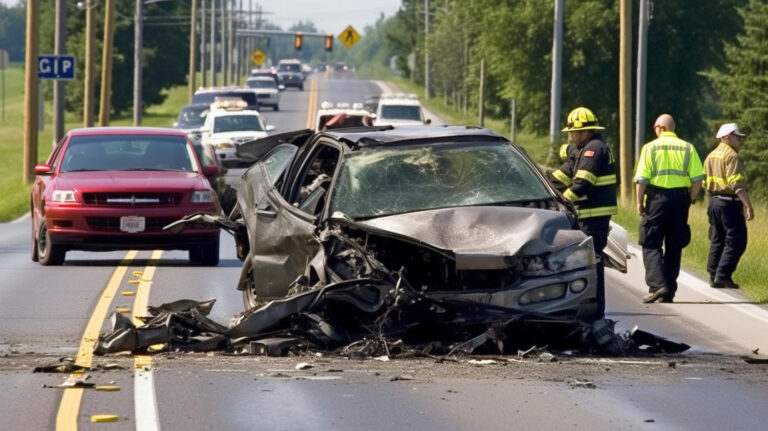Calculating Wrongful Death Damages: A Step-by-Step Guide
As an experienced attorney at LawOfficeOfBrianKelly, I’ve seen firsthand the confusion and heartbreak that accompanies wrongful death cases. When a loved one is taken too soon due to someone else’s negligence, one of the most pressing questions is how to calculate the damages owed to the grieving family. In this article, I’ll break down the key factors and steps involved in determining these damages. My aim is to provide clarity so you can better understand this complex process and ensure justice is served.
On the authority of the U.S. Courts website, wrongful death damages are calculated by considering lost earnings, medical and funeral expenses, and pain and suffering of the survivors. The court may also include loss of companionship and protection for the family. Specific laws and criteria can vary by state.
Understanding Wrongful Death Damages
Surviving family members can seek compensation through a wrongful death lawsuit when negligence or intentional actions result in a loved one’s death.
At the base in a wrongful death case, families can receive money for various expenses and losses. This can include:
- Medical bills
- Funeral costs
- Lost wages
- Future earnings the deceased would have made
Families can also get compensation for non-economic reasons, such as:
- The pain and suffering the deceased went through before they died
- The emotional pain and loss of companionship experienced by the family
In some cases, if the person responsible acted very recklessly or maliciously, the court might award additional punitive damages as punishment.
In general, the amount of money awarded can depend on things like:
- How old the deceased was
- Their potential future earnings
- Their relationship with the family members
- The details of how they died
It’s very important to talk to an experienced lawyer to understand your rights and options in seeking this compensation.
Factors Affecting Wrongful Death Compensation
Factors affecting wrongful death compensation include the cause and severity of negligence, the deceased’s age and occupation, earning potential, financial and emotional dependence, evidence availability, legal representation quality, jurisdiction, prior settlements or judgments, and public awareness or outrage.
In short, several things can affect how much compensation is given in a wrongful death case. These factors include if the person who died was partly at fault, how long you have to file a claim, if witnesses are willing to speak, the opinions and biases of the jury, and if the person being sued can actually pay the compensation.
By definition, in the end, the amount awarded is based on a mix of these elements and any other damages or penalties the court decides on.
Calculating Economic Damages
Calculating economic damages often requires forensic economists to meticulously assess the monetary impact of events such as accidents, medical malpractice, or contract breaches, sometimes even considering future wage loss and inflation.
At its simplest, to figure out financial losses, we often need to look at things like lost wages, medical bills, property damage, and other costs. This involves checking financial documents, contracts, and expert advice to judge the damage. Different methods can be used to calculate these losses, such as looking at income, costs, or market value, depending on the situation.
In concise terms, the main goal is to make a fair and unbiased estimate of the financial harm to a person or business due to the incident. We should consider both immediate and future effects when calculating these damages. Also, it’s important to include all relevant information and evidence to get an accurate figure of the losses.
Calculating Non-Economic Damages
Calculating non-economic damages involves evaluating the emotional and psychological impact of an injury or loss.
At its simplest, these types of damages are hard to measure because they don’t have a clear money value. Some examples are pain and suffering, emotional distress, losing a loved one’s company, and not being able to enjoy life as before.
To figure out these damages, courts look at different things like how bad the injury is, how it affects the person’s daily life and their relationships, how long the suffering lasts, and the age and health conditions of the person before the injury. They may use expert opinions, medical records, and personal stories to understand the extent of the damages.
In short, after deciding on these damages, they usually calculate them by multiplying the economic damages (like medical bills and lost wages) by a certain number. This multiplier depends on how serious the injury is, how deeply it affects the person, and the specific details of the case.
It’s important to know that figuring out non-economic damages is complicated and subjective. There’s no exact formula or rule for calculating the value of these intangible harms. Each case is different and needs a thorough look at the specifics to determine a fair amount for the suffering experienced.

Steps to Filing a Wrongful Death Claim
The first step in filing a wrongful death claim is establishing your eligibility based on your relationship to the deceased.
As a rule, collect all important documents like the death certificate, medical records, and any other proof that can help support your claim. Make sure to file the claim within the time limit set by your state to avoid losing your right to seek compensation.
Broadly speaking, before you file the claim, think about getting advice from a lawyer to make sure you have a strong case and understand how the process works. Once you have all the needed information and paperwork, you can officially file the wrongful death claim with the right court or office.
Rounding it Up
Calculating wrongful death damages involves considering various factors such as lost income, medical expenses, funeral costs, and emotional suffering.
What LawOfficeOfBrianKelly is urging you to look at is, by understanding the economic and non-economic losses incurred as a result of the death, the amount of compensation can be accurately determined through a thorough evaluation of the circumstances surrounding the case







